Knowing the weight of an ATV can be an important factor in deciding which ATV to buy. The most obvious reason is to ensure you have capable means of moving the ATV. Is it light enough that it can sit in the bed of your truck or on your trailer? Can you haul it with your mini SUV or do you need to buy a truck? These questions may depend on the weight of your ATV. But, that is not the only reason you should be interested in the weight of an ATV. You want to make sure you are able to lift the front or rear end of your ATV or push it up an incline if necessary. If you weigh 120 pounds, you may not want to get stuck with a 900 pound machine. If you are going to be riding places where you could roll your ATV, there is a big difference between 300 pounds and 900 pounds rolling over you. Finally, the weight of the ATV is going to determine, to an extent, how much control you have and how sharply you can turn in some cases.
So what does an average ATV weigh? About 590 pounds or 268 kg dry weight.
But, the weight of the ATV you are looking at probably won’t be 590 pounds. The weight is going to depend mostly on the size of your engine (cc), but even within those sizes, there is a lot of variance. However, it is pretty safe to say a 90cc ATV is going to weigh quite a bit less than an 800cc ATV. Finding the right ATV is going to depend on a lot of factors, including the weight, dimensions and engine power. You can find out all about different ATV sizes in our complete guide to ATV dimensions and if you need to figure out what size to buy, check out this awesome guide.
Below, you can find the most complete guide available on ATV weight based on engine class (by cc).
Wherever possible, the weight given is the dry weight. This is the measurement used by most manufacturers. It is the weight of the ATV as you would see it on the showroom floor, with no oil, gasoline or other fluids in it.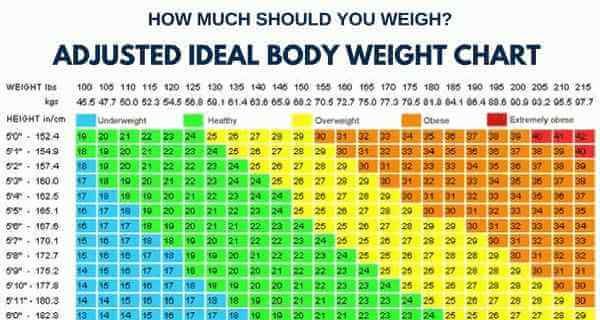 Other manufacturers, such as Honda, use what is called
curb weight, wet weight or ready to ride. This refers to the weight of the ATV with all standard equipment, all fluids and a full tank of gasoline. On an ATV, this won’t add a ton of weight and is not enough that it would impact your decision on buying an ATV. Finally, you may come across a listing for Gross Weight. This refers to the ATV and the total load it can carry including optional equipment and riders.
Other manufacturers, such as Honda, use what is called
curb weight, wet weight or ready to ride. This refers to the weight of the ATV with all standard equipment, all fluids and a full tank of gasoline. On an ATV, this won’t add a ton of weight and is not enough that it would impact your decision on buying an ATV. Finally, you may come across a listing for Gross Weight. This refers to the ATV and the total load it can carry including optional equipment and riders.
For each class of ATV, I found as many examples as I reasonably could and compared their listed weights to determine the average and any trends I mention.
The smallest entry-level youth ATVs are, of course, the lightest. The average weight of a 50cc ATV is about 215 pounds. The heaviest 50cc ATV I found was the Yamaha Raptor 50, which weighs 237 pounds. The lightest 50cc ATV I found was the Suzuki QuadSport Z50, which weighs less than me at only 174 pounds. Most of the ATVs I saw fell in the 210-225 pound range.
Most of the ATVs I saw fell in the 210-225 pound range.
I could only find a few name-brand ATVs in the 70cc class. The average weight of those was about 250 pounds.
This is probably the most popular sized ATV for kids. The average 90cc ATV weighs about 265 pounds. The largest 90cc ATV I found was the AlphaSports Daisy 90, which weighs 289 pounds. The lightest, by a single pound, was the Bombardier DS 90, which weighs 249 pounds. Most of the 90cc ATVs I saw were in the 250-260 pound range, with a few heavier exceptions skewing the average.
200cc is the class where we start getting into the bigger youth models, but there is not a huge selection at 200cc. The average 200cc ATV weighs about 365 pounds. That average is again skewed by an outlier in the super-light Yamaha Blaster, which only weighs 250 pounds.
Most of the other 200cc ATVs were in the upper 300s or lower 400s, with the Polaris Saw Tooth topping the charts at 425 pounds.
The average 250cc ATV weighs about 410 pounds. The lightest, by a fairly wide margin was the Honda TRX 250EX, which weighs only 360 pounds. The heaviest 250cc ATV I found was the Yamaha Big Bear 250, which weighs 456 pounds.
300cc is not a very popular class of ATVs so there weren’t many options. The heaviest 300cc ATV I found was the Polaris Hawkeye, which weighs 550 pounds. The lightest 300cc ATV I found was the Arctic Cat 300, which weighs 477 pounds. The average 300cc ATV weighs about 510 pounds.
The average 350cc ATV weighs about 490 pounds. This number was skewed downwards by the 375 pound Yamaha Raptor 350, which weighs 375 pounds. Most of the 350cc ATVs I saw were closer to, or over, 500 pounds. The heaviest 350cc ATV is the Arctic Cat 350, which weighs in at a relatively whopping 588 pounds.
At 400cc, we start getting into the more adult-sized ATVs. The average 400cc ATV weighs about 495 pounds. This is the lightest class where we really start seeing some huge ranges in weight with stark differences between sport and utility models. The lightest and heaviest 400cc ATVs are from Arctic Cat. The lightest is the Sport DVX 400, which weighs 372 pounds. The heaviest is the 400 4X4 Auto, which comes in at 645 pounds.
The average 400cc ATV weighs about 495 pounds. This is the lightest class where we really start seeing some huge ranges in weight with stark differences between sport and utility models. The lightest and heaviest 400cc ATVs are from Arctic Cat. The lightest is the Sport DVX 400, which weighs 372 pounds. The heaviest is the 400 4X4 Auto, which comes in at 645 pounds.
The average 450cc ATV weighs about 520 pounds, but there is a big difference between the sport and utility models in this class. The lighter sport models typically weigh less than 400 pounds. The lightest of which is the Yamaha YFZ 450, which weighs 350 pounds. The heavier utility models are 500-700 pounds. The heaviest I saw was the 696 pound Polaris Sportsman 450.
The average 500cc ATV weighs about 630 pounds. The two outliers bringing the average weight down are the Polaris Outlaw 500, at 425 pounds, and the Polaris Predator 500, at 405 pounds. Most of the other 500cc ATVs I reviewed weighed more than the average of 630 pounds. The heaviest 500cc model I found was the Polaris Sportsman 500 X2 EFI, which weighs 791 pounds. As you might be catching on, The various Polaris Sportsman ATVs are usually heavier than their counterparts.
Most of the other 500cc ATVs I reviewed weighed more than the average of 630 pounds. The heaviest 500cc model I found was the Polaris Sportsman 500 X2 EFI, which weighs 791 pounds. As you might be catching on, The various Polaris Sportsman ATVs are usually heavier than their counterparts.
The average 650cc ATV weighs about 635 pounds. The heaviest machine I found at 650cc was the Arctic Cat h2 TRV Plus, which weighs in at 724 pounds. The lightest 650cc ATV I found was the Bombardier DS 650X, which wasn’t just the only 650cc ATV I found under 600 pounds, it was under 500 pounds, at just 494 pounds.
At 700cc, we see our biggest gap between the lightest and heaviest ATVS. The Yamaha Raptor 700R weighs in a shockingly light 396 pounds. On the other end, the Arctic Cat 700 Diesel weighs in at 809 pounds. With that wide spread, the average 700cc ATV weighs in at 645 pounds. While the Yamaha Raptor is by far the lightest, you can find a 700cc ATV at nearly any weight you want, with multiple models available in the 500s, 600s and 700s for pounds.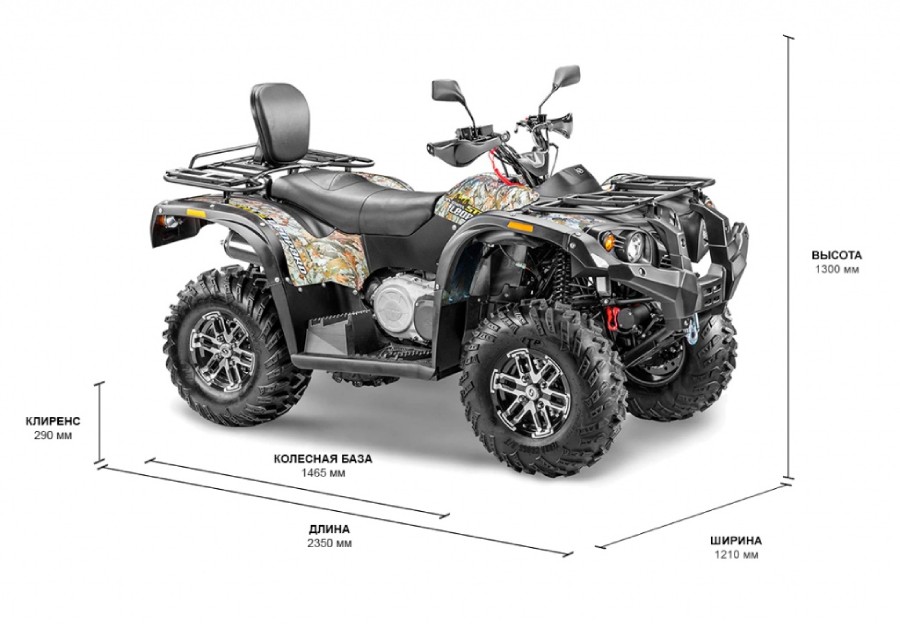
At 800cc, we are getting into the really big ATVs. The average 800cc ATV weighs about 715 pounds. The Bombardier Renegade 800 is probably the only 800cc ATV you can find under 600 pounds, and it weighs in at 597 pounds. The heaviest of the bunch is the Polaris Sportsman 800 X2 EFI, which weighs 839 pounds. Most of the 800cc ATVs are going to be plus or minus 50 pounds of 700 pounds. Indeed, the average 800cc ATV weighs about 715 pounds.
Finally, we get to the biggest of the bunch. The most powerful, and heaviest, ATVs out there are going to be the 1000cc ATVs. The average 1000cc ATV weighs about 840 pounds. At 1000cc, you just cannot find a light machine so there are a lot of considerations that need to go into purchasing such a large machine, other than just power. The lightest 1000cc ATV I could find was the Arctic Cat 1000XT, which still weighs 772 pounds. The heaviest 1000cc ATV I could find was the Polaris Sportsman XP 1000. At 927 pounds, that is an ATV you do not want landing on you.
The heaviest 1000cc ATV I could find was the Polaris Sportsman XP 1000. At 927 pounds, that is an ATV you do not want landing on you.
If you are buying a new ATV, check out these accessories you may want, and of course, don’t forget to check out our very select recommended gear.
Learning about the weight of an ATV can be a vital consideration in determining which ATV to buy.
One of the most apparent reasons is to ensure you have qualified methods of moving the ATV. Is it light enough that it can be in the bed of your vehicle or on your trailer? Can you transport it with your small SUV or do you require to get a big vehicle?
These questions might rely on the weight of your ATV. However, that is not the only reason you must want the weight of an ATV. You wish to make certain you have the ability to raise the front or rear end of your ATV or push it up an incline if essential.
If you evaluate 120 pounds, you might not wish to obtain stuck with a 900 extra pound device. If you are going to be riding locations where you could roll your ATV, there is a big distinction between 300 pounds and 900 pounds surrendering you.
Ultimately, the weight of the ATV is going to figure out, to an extent, how much control you have as well as how greatly you can turn in some situations.
Table of Contents
The weight of ATV is divided into dry weight and curb weight. Lots of manufacturers don't specify the completely dry weight of their ATV. They make use of something called curb weight or wet weight, which basically have the same meaning.
While completely dry weight is when the ATV is empty of all fluids (gas, oils, brake fluid, coolant, etc), curb weight or wet weight is the ATV's weight with all fluids complemented in their suitable containers. Curb weight includes common devices but not either travelers or cargo.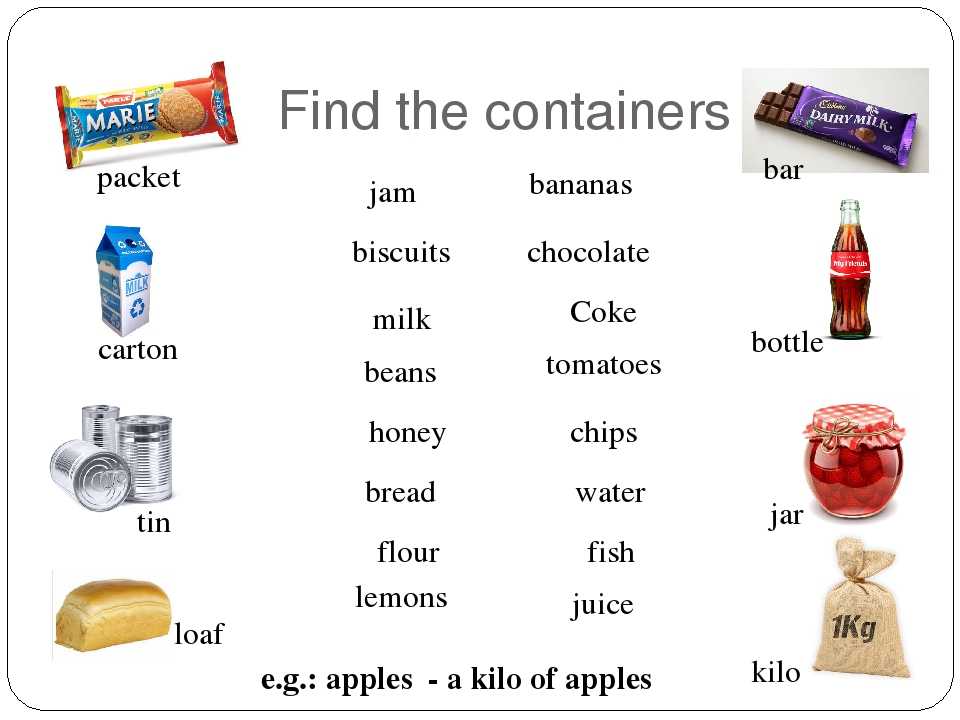
The completely dry weight of ATVs varies from concerning 220 pounds to 1170 pounds. Dry weight is the ATV's weight with no cargo, liquids, or passengers.
The average weight of a recreational ATV and utility ATV is approximately 700 pounds. The weight of an ATV mainly depends upon the size of its engine.
Discovering the best ATV depends on various elements like engine power, measurements, and weight. Before you get an ATV, find out and understand these factors. So, kick back, loosen up, as well as enjoy finding out about ATV weights.
Let's take a look at the weight of ATVs with different engine sizes.
50CC ATVS
The tiniest entry-level youth ATVs are, certainly, the lightest. The average weight of a 50cc ATV is approximately 215 pounds. The heaviest 50cc ATV I discovered was the Yamaha Raptor 50, which weighs 237 pounds.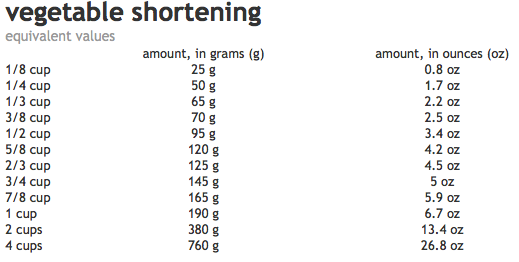 The lightest 50cc ATV I discovered was the Suzuki QuadSport Z50, which weighs only 174 pounds. Most of the ATVs I saw fell in the 210-225 pound range.
The lightest 50cc ATV I discovered was the Suzuki QuadSport Z50, which weighs only 174 pounds. Most of the ATVs I saw fell in the 210-225 pound range.
70CC ATVS
I could just discover a few name-brand ATVs in the 70cc class. The ordinary weight of those was about 250 pounds.
90CC ATVS
This is most likely one of the most prominent sized ATVs for children. The ordinary 90cc ATV is approximately 265 pounds. The largest 90cc ATV I discovered was the AlphaSports Daisy 90, which weighs 289 pounds. The lightest, by a single pound, was the Bombardier DS 90, which considers 249 pounds. The majority of the 90cc ATVs I saw were in the 250-260 pound array, with a few larger exceptions skewing the standard.
200CC ATVS
200cc is the class where we begin getting involved in the larger youth model, but there is not a massive selection at 200cc. The ordinary 200cc ATV weighs regarding 365 pounds. That standard is again skewed by an outlier in the super-light Yamaha Blaster, which just weighs 250 pounds. A lot of the other 200cc ATVs remained in the upper 300s or reduced 400s, with the Polaris Saw Tooth topping the graphes at 425 pounds.
The ordinary 200cc ATV weighs regarding 365 pounds. That standard is again skewed by an outlier in the super-light Yamaha Blaster, which just weighs 250 pounds. A lot of the other 200cc ATVs remained in the upper 300s or reduced 400s, with the Polaris Saw Tooth topping the graphes at 425 pounds.
250CC ATVS
The typical 250cc ATV is approximately 410 pounds. The lightest, by a rather wide margin was the Honda TRX 250EX, which weighs only 360 pounds. The heaviest 250cc ATV I located was the Yamaha Big Bear 250, which considers 456 pounds.
300CC ATVS
300cc is not a preferred class of ATVs so there weren't numerous options. The heaviest 300cc ATV I found was the Polaris Hawkeye, which considers 550 pounds. The lightest 300cc ATV I located was the Arctic Pet cat 300, which weighs 477 pounds. The average 300cc ATV weighs about 510 pounds.
350CC ATVS
The ordinary 350cc ATV is approximately 490 pounds. This number was skewed downwards by the 375 pound Yamaha Raptor 350, which is approximately 375 pounds. The majority of the 350cc ATVs I saw were closer to, or over, 500 pounds. The heaviest 350cc ATV is the Arctic Pet cat 350, which weighs in at a reasonably tremendous 588 pounds.
This number was skewed downwards by the 375 pound Yamaha Raptor 350, which is approximately 375 pounds. The majority of the 350cc ATVs I saw were closer to, or over, 500 pounds. The heaviest 350cc ATV is the Arctic Pet cat 350, which weighs in at a reasonably tremendous 588 pounds.
400CC ATVS
At 400cc, we start entering the adult-sized ATVs. The ordinary 400cc ATV is approximately 495 pounds. This is the lightest class where we really begin seeing some substantial varieties in weight with raw distinctions between sport and utility models. The lightest and heaviest 400cc ATVs are from Arctic Pet cat. The lightest is the Sporting activity DVX 400, which is approximately 372 pounds. The heaviest is the 400 4X4 Automobile, which is available at 645 pounds.
450CC ATVS
The ordinary 450cc ATV weighs is approximately 520 pounds, however, there is a large distinction between the sport as well as utility versions in this class. The lighter sporting activity models typically are less than 400 pounds. The lightest of which is the Yamaha YFZ 450, which evaluates 350 pounds. The heavier utility models are 500-700 pounds. The heaviest I saw was the 696-pound Polaris Sportsperson 450.
The lighter sporting activity models typically are less than 400 pounds. The lightest of which is the Yamaha YFZ 450, which evaluates 350 pounds. The heavier utility models are 500-700 pounds. The heaviest I saw was the 696-pound Polaris Sportsperson 450.
500CC ATVS
The average 500cc ATV is approximately 630 pounds. The two outliers bringing the average weight down are the Polaris Hooligan 500, at 425 pounds, and also the Polaris Predator 500, at 405 pounds. Most of the various other 500cc ATVs I examined weighed greater than the standard of 630 pounds. The heaviest 500cc model I found was the Polaris Sportsperson 500 X2 EFI, which is approximately 791 pounds. As you may be catching on, The different Polaris Sportsperson ATVs are typically heavier than their equivalents.
650CC ATVS
The typical 650cc ATV is approximately 635 pounds. The heaviest model I discovered at 650cc was the Arctic Feline h2 TRV Plus, which weighs in at 724 pounds. The lightest 650cc ATV I found was the Bombardier DS 650X, which had not been just the only 650cc ATV I discovered under 600 extra pounds, it was under 500 extra pounds, at simply 494 pounds.
The lightest 650cc ATV I found was the Bombardier DS 650X, which had not been just the only 650cc ATV I discovered under 600 extra pounds, it was under 500 extra pounds, at simply 494 pounds.
700CC ATVS
At 700cc, we see our largest space between the lightest as well as heaviest ATVs. The Yamaha Raptor 700R weighs an amazingly light 396 pounds. On the various other end, the Arctic Cat 700 Diesel weighs in at 809 pounds. Keeping that large spread, the ordinary 700cc ATV weighs in at 645 pounds. While the Yamaha Raptor is without a doubt the lightest, you can discover a 700cc ATV at almost any kind of weight you desire, with multiple models readily available in the 500s, 600s and 700s for pounds.
800CC ATVS
At 800cc, we are entering the truly huge ATVs. The average 800cc ATV is approximately 715 pounds. The Bombardier Abandoner 800 is probably the only 800cc ATV you can locate under 600 pounds, as well as it weighs in at 597 pounds. The heaviest of the bunch is the Polaris Sportsman 800 X2 EFI, which evaluates 839 pounds. Most of the 800cc ATVs are going to be plus or minus 50 pounds of 700 pounds. Without a doubt, the average 800cc ATV weighs about 715 pounds.
The heaviest of the bunch is the Polaris Sportsman 800 X2 EFI, which evaluates 839 pounds. Most of the 800cc ATVs are going to be plus or minus 50 pounds of 700 pounds. Without a doubt, the average 800cc ATV weighs about 715 pounds.
1000CC ATVS
Ultimately, we reach the biggest of the bunch. The most powerful, as well as heaviest, ATVs out there are mosting likely to be the 1000cc ATVs. The average 1000cc ATV evaluates about 840 pounds. At 1000cc, you just can not discover a light model so there are many factors to consider that need to go into purchasing such a big model, other than simply power. The lightest 1000cc ATV I could locate was the Arctic Pet Cat 1000XT, which still evaluates 772 pounds. The heaviest 1000cc ATV I could locate was the Polaris Athlete XP 1000. At 927 pounds, that is an ATV you do not desire landing on you.
There are 3 reasons that the weight of your ATV is important.
1. Transporting the ATV.
2. Utilizing the ATV to carry things.
3. Performance.
Let's go through each of them
Every trailer has a weight capacity, and you must not go over that.
Also, loading the trailer and the weight at specific points on the trailer affects towing too.
The vehicle you tow the trailer will also have a tow weight capacity that you must not go over. It’s not always about taking off but stopping. It would be best if you had a truck with enough weight that it won’t get thrown around when towing and has the braking power to stop.
Make sure you never exceed the towing capacity of your truck or trailer.
Don’t forget the weight of your gear and accessories too!
If what you tow is as well hefty, it raises the front wheels and also makes guiding impossible. However more notably, stopping is nearly impossible as well.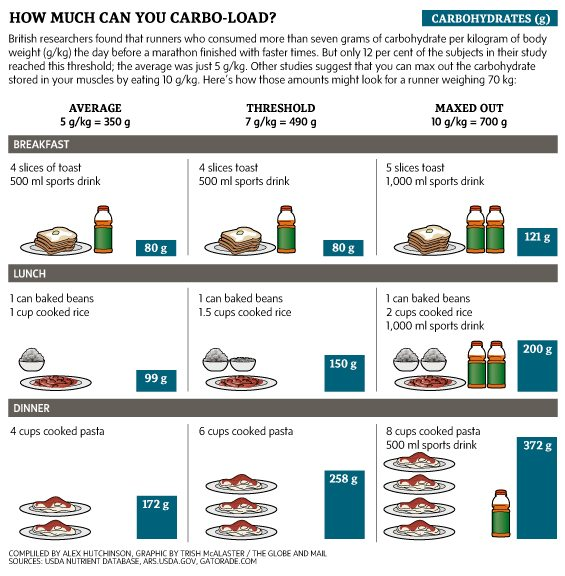
So don't tow things over your towing ability.
If you intend on using your ATV for towing things, you'll need to concentrate on purchasing heavier ATVs. The much heavier the ATV, the less complicated it is to regulate what you tow.
If you do a lot of towing, consider getting a side-by-side as they weigh a whole lot more and will do better at transporting.
The larger the ATV, the harder the engine has to work.
This is why you see the efficiency racing version 450's weigh so little contrasted to the utility ATVs.
If you like to go fast as well as play around, a lighter ATV will be what you need.
If you like to obtain the job done, after that the ATVs you want are on the much heavier end.
The major determinant of the weight of the ATV you will certainly buy is your designated purpose. Getting a hefty ATV has advantages over purchasing a lighter ATV.
A few of the benefits of a hefty ATV are:
1. Hefty ATVs execute much better over rough surfaces than lighter ATVs.
Hefty ATVs execute much better over rough surfaces than lighter ATVs.
2. Heavy ATVs have a much better shock absorber.
3. Hefty ATVs use much better convenience than lighter ATVs.
4. Heavy ATVs are faster and also have the very best acceleration.
Heavy ATVs also have disadvantages.
Several of the downsides of a heavy ATV are:
1. Heavy ATVs take in even more gas.
2. Heavy ATVs set you back greater than lighter ATVs.
3. Heavy ATVs are difficult to maneuver.
ATVs are not light as bicycles, they generally have an aluminum framework and incorporated with the engine as well as other parts, you will see a 500lb machine. Recognizing the weight of your ATV is essential if you are seeking to tow it to the mountains or a route. hauling the ATV with a pick-up will not be an issue, nevertheless, if you have a crossover SUV it might be more of a pain.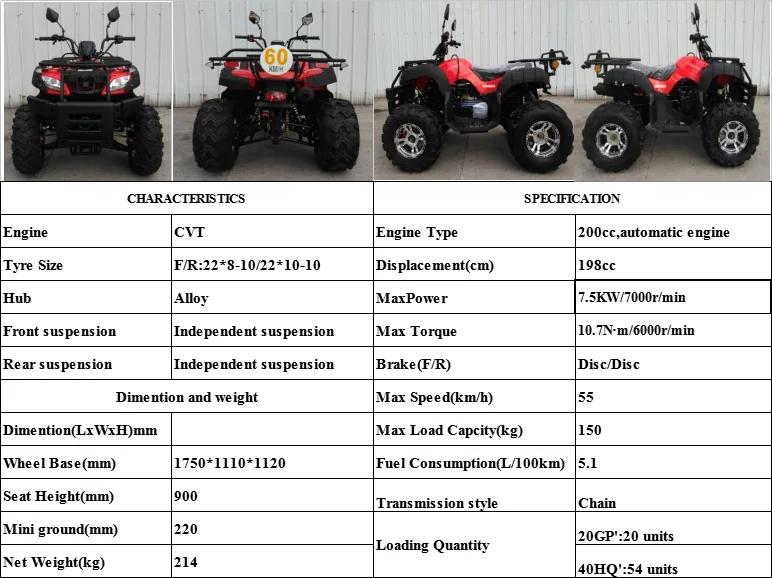 Most crossovers can tow around 1000 pounds approximately if unless the ATV is a heavyweight, you shouldn't have any type of problems.
Most crossovers can tow around 1000 pounds approximately if unless the ATV is a heavyweight, you shouldn't have any type of problems.
Selecting the best ATV weight can be frustrating in some cases, however if you recognize the factors to be considered, you will have no trouble choosing the ideal one. If you ride ATVs for enjoyable, you possibly won't opt for a 1000cc ATV. That is totally far from your desired function. Picking the best ATV weight should be the least of your concerns as long as you recognize what you wish to use it for.
How Fast 125cc ATV Go? Most Complete Overview 2023
Rodney L Herron
Rodney L is a technical writer and product consultant with over a decade of experience in the motor industry. Rodney is a fan of performance machines that run fast and loud and an expert in all things custom. His numerous articles and write-ups are available at our knowledge base. Whether it’s something wrong with your motorcycle or you are building a custom bike, you can trust Rodney’s experience.
ATV
Saltreador
Yamaha YFM 350 R aka Raptor is an evil adrenaline rush toy. This sports ATV, despite the modest engine size, is able to Read more Yamaha YFM 350 R review →
ATVYamahaReviewsATV
Saltreador
ATV Honda TRX 650 Rinkon is devoid of any aggressiveness, both in appearance and in character. This is not a sports equipment and not a monstrously powerful "rogue" like a liter Renegade or Read more Honda TRX 650 review →
ATVHondaReviewsATV
Saltreador
Injection ATV Stels ATV 700 H is a solid, weighty utility vehicle. Of course, only cubic capacity makes it related to more expensive competitors, while Read more Stels ATV 700 review →
ATVStelsReviews Find: The John Deere Gator XUV 855D S4 is a four-seat UTV from a notorious manufacturer that can go almost anywhere you want, and[. ..]
..]
Many ATV enthusiasts don't mind their kids following in their footsteps. Models like[...]
The heavy ATV Arctic Cat 1000 Mud Pro is a real leviathan for small ATVs. He is able to wade through any, the most difficult terrain, with a roar[...]
The Honda Pioneer 700-4 utility buggy is not the only ATV that can take four people on board, but it is quite strong different[...]
Few people know that the world famous manufacturer KTM also produces ATVs, or ATVs. True, the line of four-wheeled friends at[...]
All-wheel drive sports ATV Yamaha Wolverine 450 fully justifies its name. The predatory appearance of this ATV really makes it look like a grouped[...]
The Stels UTV 800 Dominator all-terrain vehicle is the flagship of the Velomotors company of Russian-Chinese origin, the heaviest and most powerful of all ATVs and buggies[. ..]
Looking at the Arctic Cat TRV 700 utility ATV, you realize that you have already seen it somewhere. At least if you have ever[...]
The Stels ATV 600 Russian-Chinese utility ATV is aimed at those who want a powerful all-terrain vehicle, but do not want to overpay for a more famous brand.[... ]
Stels Wolverine S800 is an example of a domestic-made snowmobile, albeit with Chinese roots, which is quite capable of competing on equal terms with [...]
| Children's ATV specifications Children's ATV specifications may vary significantly. Based on the parameters of the transport in question, one or another model can be recommended for children of different ages. To make it easier for you to choose a gift for your child, in this article we will try to reveal the main features of the technical characteristics of children's ATVs. Let's start by simply listing the main parameters that require special attention of the buyer while he is trying to decide on a device that he likes and can afford. So:
Now we will tell about each of the above parameters in more detail. DimensionsATVs must be sized according to the age and height of the child. If you want to purchase vehicles for growth, then make sure that at the moment the device is safe for the child: it should be comfortable for him to sit and the steering wheel should be accessible. Engine powerAs you know, the maximum speed of a vehicle depends on the engine power. When choosing the devices in question for their children, parents often look at this parameter. So, for example, if you want to buy a children's ATV for growth - an engine size of 125 cubic meters with a power regulator can be quite suitable for children 10-15 years old. Whether you decide to purchase a children's 4-stroke or 2-stroke quad, don't forget to carefully examine all its options. Perhaps you don’t need some of them, or, conversely, the function you need is missing, then it’s better to look for a model of a different plan. Battery capacityThe battery capacity determines how long the connected device can operate. In our case, this is an electric quad bike. Most often, this transport is purchased for children aged 2-3 to 7-9 years. Such models are no worse than their gasoline counterparts, and even have certain advantages in the form of:
For example, children's ATVs 24v or 12 volts work up to an hour and half an hour, respectively. Our consultant can provide you with more information. Write him your question online or contact him by phone. SafetyWhichever kids quad you choose (110-150cc or 49cubes), the safety of this device is of great importance. All because your children will ride it. When it comes to protecting children, parents tend to be very sensitive about this issue. The safety of the vehicle in question will be high if:
Some models are equipped with additional seat belts, which is quite justified at a certain age of children. It should also be noted that the safety of toddlers driving a battery ATV increases the presence of a remote control for parents, which at any time will allow you to stop your baby's car (however, its range is limited and, as a rule, is about 0.2 km). Quality of materialsThe quality of materials, whether you decide to buy a 10 or 49 cubic meters children's ATV, is one of the important parameters when choosing the model of the transport in question. As a rule, well-known brands use proven raw materials and technologies during the manufacture of this vehicle. Little-known enterprises very rarely, but still, may try to reduce the cost of the final product through the use of cheaper and lower quality materials. But such a hack, as a rule, is immediately visible: the assembly is lame and individual parts seem flimsy. Conscientious companies are always ready to provide quality certificates for their products. Maximum load capacityThis parameter indicates the maximum child weight at which the vehicle in question can be safely used. It is clear that a children's two-seater ATV will initially have a greater carrying capacity than a similar single-seat device for a 3-year-old toddler. Why is this feature important? Because if it is neglected (the use of a quadric by a child whose weight exceeds the specified allowable maximum), various unpleasant situations are possible:
Do not remain indifferent to this characteristic so that your child does not suffer. Where can I buy children's four-wheel drive ATVs without overpaying?Children's four-wheel drive ATVs can be purchased at ZonaSporta without any hitches and overpayments. Our company offers its customers (both permanent and potential) very favorable conditions for cooperation. |